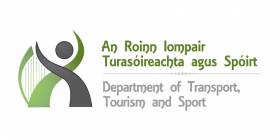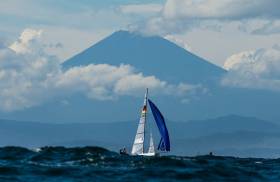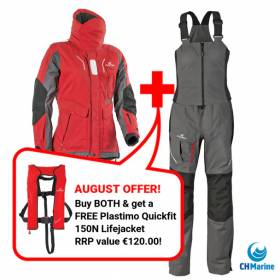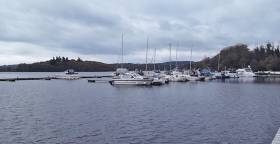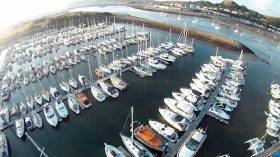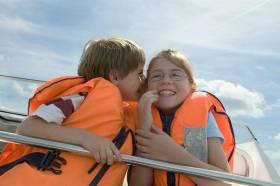Displaying items by tag: lifejackets
Notice On Use Of Lifejackets & Buoyancy Aids On The Water
A new Marine Notice from the Department of Transport, Tourism and Sport reiterates the requirements for lifejackets on pleasure craft and personal water craft.
Superseding a previous notice from spring 2016, the new document explains personal flotation devices or PFDs (both lifejackets and buoyancy aids), the relevant regulations and legal requirements, and instructions for their safe use on the water.
Full details can be found in Marine Notice No 32 of 2019, a PDF of which is available to read or download HERE.
Sweltering late summer heat in Japan has prompted sailing officials to relax rules on the wearing of lifejackets during the recent Tokyo 2020 test events, as France 24 reports.
Doctors recommended competitors in the Ready Steady Tokyo windsurfing final on Wednesday (21 August) remove their lifejackets in order to combat “dangerous” overheating, said French windsurfer Charline Picon.
This followed changes that allowed athletes to wear jackets fitted with ice packs, she added, while World Sailing is reportedly working on changes over issues with breathability in the Lycra clothing worn.
Other changes under consideration include compulsory cool-down breaks for athletes, and a limit on how hot the water temperature can be before events are halted.
Irish aquatic athletes made a strong showing this week at Enoshima on Sagami Bay, about 60km south-west of Tokyo — with Finn Lynch just narrowly missing the Laser medal race, and 49erFX sailor Saskia Tidey awaiting confirmation of a Tokyo berth with Team GB after her bronze medal win with Charlotte Dobson.
France24 has more on the story HERE.
Big savings on lifejackets and offshore seawear can be yours among CH Marine’s August specials.
Save nearly €30 on the price of the Zhik P2 PFD in black for a limited time only, now only €109.95.
Prices have also been slashed on Plastimo Activ’ offshore sailing jackets and hi-fit trousers for men and women.
And what’s more — buy a jacket and trousers combo and get a Plastimo Quickfit 150N Lifejacket, with a recommended retail price of €120, absolutely free.
Innovative Lifejacket Design From Young Scientist Could Make Work Easier For Rescuers
The son of an Irish Coast Guard volunteer from Co Clare is exhibiting his innovative lifejacket design at this year’s BT Young Scientist and Technology Exhibition at the RDS in Dublin.
As TheJournal.ie reports, 16-year-old Dylan Egan has been working on a new system for an automatically inflating vest that won’t react to splashes of water.
Egan’s design would also allow more experienced seafarers such as rescue personnel to toggle the auto-inflate function to make it more convenient when working at sea.
The BT Young Scientist and Technology Exhibition continues till tomorrow, Saturday 12 January.
Crosshaven Lifeboat Rescues Man Whose Lifejacket Failed To Inflate
A man who fell overboard from his vessel near Cork Harbour was lucky to escape relatively unscathed after his lifejacket failed to inflate.
Crosshaven’s volunteer RNLI crew were requested to launch their inshore lifeboat at 5.20pm yesterday evening (Tuesday 27 November) to reports of a person shouting for help at Drakes Pool, a mile upriver from the lifeboat station.
On arrival, it was found the casualty had managed to remove himself from the water and onto another moored vessel after being in the water for up to 30 minutes, and was extremely cold and hypothermic.
The casualty was immediately evacuated to the lifeboat station where he was assessed by Dr John Murphy, Crosshaven RNLI’s doctor, and put into a hot shower before being taken by ambulance to Cork University Hospital for further evaluation.
Speaking following the the callout, Phil Maguire, Crosshaven RNLI Deputy Lifeboat Press Officer said: “We wish the casualty well following what must have been a frightening experience.”
The casualty was wearing a lifejacket, but this failed to inflate — highlighting the importance of getting your safety equipment checked and kept in good order.
Coroner In Michael Beattie Inquest Calls For Compulsory Lifejackets On NI Waterways
#WaterSafety - Lifejackets should be made compulsory on Northern Ireland’s waterways, the inquest into the drowning of a former Lough Erne Yacht Club commodore has heard.
As BBC News reports, coroner Joe McCrisken suggested that Michael Beattie may have had a better chance of survival if he had been wearing a personal flotation device.
Beattie, whose body was found in the lough on 12 December last year, is thought to have slipped into the water in icy conditions while attempting to board his luxury motor cruiser the night before.
CCTV footage showed him struggling in the water for almost two hours hours before swimming to land, apparently in a confused state, and falling back into the water 90 minutes later.
The inquest found Beattie died from drowning as a result of cold water immersion and hypothermia.
“County Fermanagh has some of the most tranquil and beautiful waterways in the world, but water has inherent dangers,” McCrisken said.
BBC News has more on the story HERE.
#RNLI - A one-day cycling fundraiser for the RNLI is set to take place on Sunday 16 September when four cycling friends will ride 310km from Dublin to Clifden in Co Galway while wearing lifejackets for the entire trip.
Clifden RNLI’s station mechanic Robert King will cycle along with John James Flaherty, Daniel King and Ciaran Hickey of the Twelve Bens and Western Lakes Cycling Clubs.
The quartet will set off from the RNLI Regional Office in Swords on the morning of Sunday 16 September and make their way west across the Shannon to Clifden lifeboat station.
Organiser Rob King said: “Since we all share a common interest in cycling with our local clubs, we thought it would be a good idea to undertake a trip like this raising funds but also to raise awareness around water safety at the same time.
“We feel that since lifejackets are so compact nowadays that this exercise will highlight how easy it is to wear one. Our basic message is ‘If we can wear one, so can you’.”
The Lifejacket Cycling Challenge has an online donation page and you can also follow the group and see more photos and updates on Facebook.
#WaterSafety - Alistair Rumball of the Irish National Sailing Club shares a story from a friend that serves as a timely reminder of the importance of keeping vigilant whenever on or near the water.
Alistair’s friend was mooring his Jeanneau Sun Odyssey 35 for the night at Conwy Quays in North Wales when tiredness got the better of him as he manoeuvred the boat into the narrow berth available.
Forgetting the dinghy tied to his stern, he allowed the smaller vessel to wedge between his starboard and the pontoon, with the port bow leaning against the fender of the neighbouring boat.
“Having untied the line I somehow decided to head back on to the pontoon in order to manoeuvre the dinghy out of the way, but in my haste I attempted to step straight from the transom to the pontoon. It didn’t work," he writes.
“Of course I snagged myself on the line holding the yacht to the pontoon. One foot just about made it to the pontoon but, now overbalancing because I have tripped on the line, I ended up in the water.”
Luckily for Alistair’s friend, his lifejacket sprang into action, and he was only underwater “for perhaps a split second” before the device fully inflated.
Hauling himself out of the water was a different matter, however, as his choice of boots — now flooded with marina water — instead of deck shoes made the move exceedingly difficult.
The INSC website has more on the story HERE.
CH Marine’s Guide To Buying A Lifejacket For Your Child
#WaterSafety - Finding a lifejacket for your child isn’t hard — but it is vital to choose the right jacket with the right features, as CH Marine’s new handy buying guide explains.
Lifejackets are now designed even for infants as young as a few months. Paying attention to comfort, fit, colour and style will encourage your child to enjoy wearing their lifejacket — as well as keep them safe and supported should they enter the water.
CH Marine’s lifejacket buying guide is available as a PDF to read or download HERE.
#WaterSafety - Irish Water Safety, the Irish Coast Guard and RNLI have issued a joint appeal reminding the public to stay alert to the risk of drowning at all times and especially in the current hot weather.
On average, five people drown in Ireland every fortnight — and the risks increase during July and August, the most popular months for swimming and other water-based activities.
The joint appeal includes the following water safety advice to avoid summer tragedy:
- Swim within your depth and stay within your depth. Never swim alone.
- Wear a lifejacket or personal floatation device when on or near the water and make sure that it has a correctly fitting crotch strap. This applies when boating but equally to both experienced and once-off casual anglers fishing from shore.
- Supervise children closely and never use inflatable toys in open water. The recent multiple rescue off Fethard is testament to the dangers of using inflatables where a sudden current can put lives under threat.
- Swim at lifeguarded waterways listed by Irish Water Safety, or in areas that are known locally as safe and where there are ring buoys present to conduct a safe rescue.
If you see someone in difficulty, these simple steps may save a life:
- Shout to the casualty and encourage them to shore. This may orientate them just enough.
- Reach out with a long object such a branch or a piece of clothing but do not enter the water yourself.
- Throw a ring buoy or any floating object, call 112 and ask for the coastguard.
Waterways Ireland is also running a campaign with Irish Water Safety to encourage the wearing of lifejackets and personal flotation devices on the Shannon Navigation during the 2018 summer boating season.
The awareness campaign will aim to emphasise the importance of wearing lifejackets at key focal points along the Shannon.
You may notice some new signage which will be erected at key locations – locks and marinas — encouraging water safety. Information leaflets will also be distributed to water users at these key locations on the water.
Waterways Ireland encourages the safe use of its waterways by all. The wearing of lifejackets and personal flotation devices is not only an effective way of enhancing water safety, it is also a legal requirement on all pleasure craft in Ireland.


























